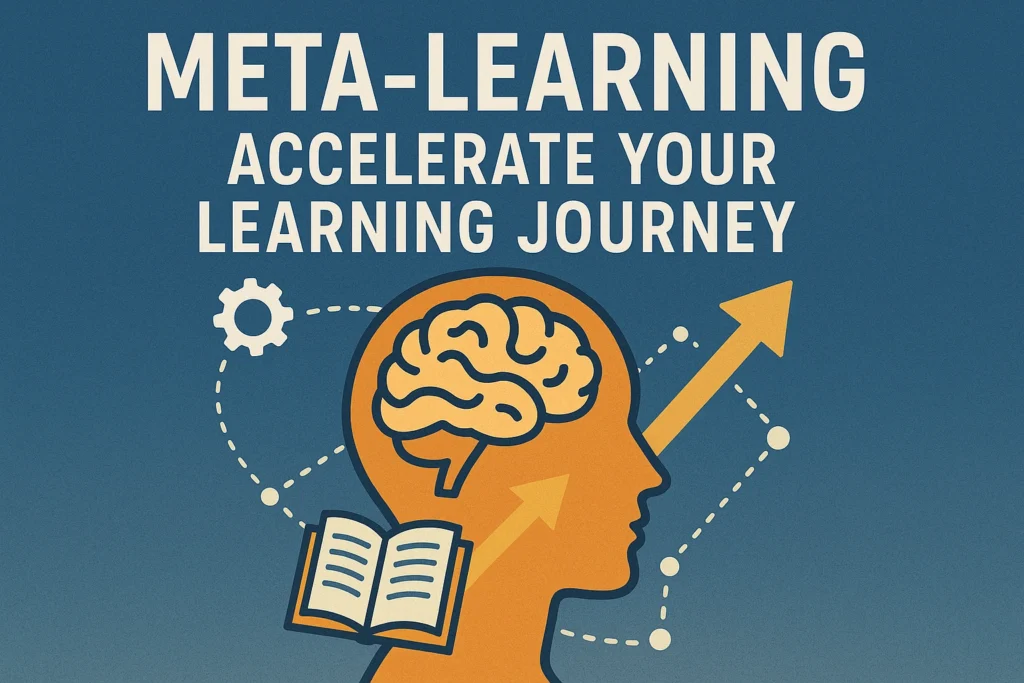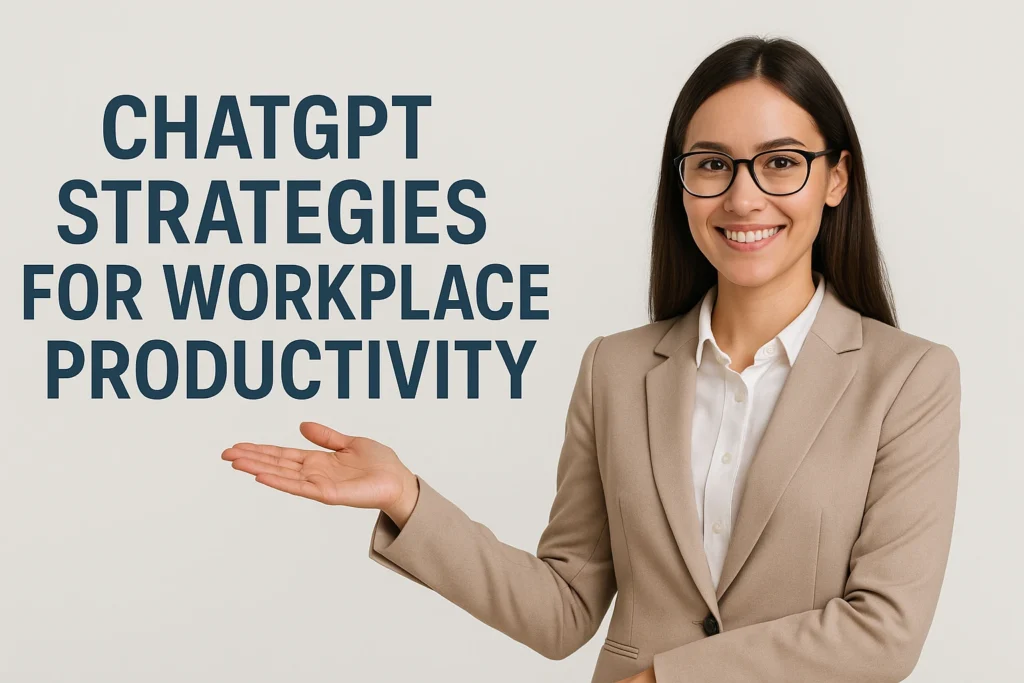Table of Contents
ToggleMeta-Learning: Accelerate Your Learning Journey

Accelerating Learning Through Meta-Learning and Mindset
This Summarizes key areas, neuroscience, and practical strategies for accelerated learning, highlighting meta-learning, brain mechanisms, skill acquisition stages, and optimization tactics.
1. The Core Concept: Meta-Learning as a Success Driver
Drishti Sharma posits that the ability to learn quickly is a distinguishing characteristic of successful individuals. She introduces "meta-learning" as an "efficient way to learn" that goes beyond mere memorization.
Understanding "How to Learn"
Meta-learning involves understanding "How to Learn," which allows individuals to "train [their] mind in order to learn a new skill in a short span of time." This approach empowers learners to acquire new competencies more rapidly and effectively.
Universal Applicability
The message is universally applicable, as "learning never stops" and is crucial for students, self-employed individuals, and corporate professionals alike. In today's rapidly evolving world, continuous and accelerated learning is a vital skill for everyone.
2. Neuroscience of Learning: Brain as a Muscle
Sharma explains the fundamental neurological processes underlying learning, likening the brain's capacity for growth to a muscle.
Neuroplasticity: Strengthening Connections
The brain is akin to a "muscle." When a new skill is learned, "the neurons of your brain... connect to each other." Consistent practice strengthens these connections, a process called neuroplasticity. Stronger neural connections facilitate easier learning and long-term retention, developing "good muscle memory."
Dopamine and Motivation: The Reward System
Dopamine is crucial for the brain's "reward system and motivation." Initial progress in learning a new skill triggers a dopamine release, creating a feeling of achievement and sustained motivation. However, slow progress or plateaus can lead to a decrease in dopamine, causing demotivation and the tendency to "give up on that skill."
3. The 4 Stages of Learning (and the Plateau Challenge)
Sharma outlines a natural, four-stage learning process, highlighting the critical "plateau" phase where many learners falter.
Stage 1: Discomfort
This is the initial phase where "everything is new." Learners experience difficulty with basics and new information, requiring a "force push" to move forward. It's the steepest part of the learning curve.
Stage 2: Improvement
As basics are grasped and progress is made, confidence rises, and dopamine is released. This enjoyable stage motivates further engagement, making learning feel rewarding and encouraging continued effort.
Stage 3: Plateau (The Challenge)
A critical stage where "you have cleared the basics, but you have to go to the intermediate or advanced level." This phase involves refining skills and correcting small mistakes, which can be "very frustrating" as improvement seems to stall, and dopamine release decreases. This is where many learners "give up."
Sharma emphasizes that for essential learning (education, career advancement), abandoning a skill at this stage is not an option, necessitating the use of specific tactics.
Stage 4: Success
This stage is reached by those who overcome the plateau by remembering their initial "intention or motivation" and diligently refining their skills. Achieving mastery requires repeating this learning cycle, consistently pushing through discomfort to reach new levels of proficiency.
4. Five Ways to Speed Up Your Learning Process
Sharma presents five actionable strategies to accelerate learning, especially when facing challenges like the plateau, ensuring more efficient progress.
4.1. The 80-20 Rule (Pareto Principle)
Concept: Focus "20% of your efforts" to achieve "80% of your results." This involves "choosing smart work over hard work," identifying "shortcuts" to maximize outcomes with less effort.
Application: For learning a new language, prioritize "1,000 words that people use in daily conversations" over "10,000 random words." Sharma's example of learning basic useful phrases for a trip to Thailand, or focusing on "basic beats and rhythm" for drums, illustrates this. This rule "will be able to save yourself from unnecessary struggles" and time-wasting.
Prerequisite: A "clear intention or your why" is crucial for identifying where to apply the 20% effort effectively.
4.2. Clear Intention (The "Why")
Importance: A clear "why" makes the learning "journey very focused and meaningful," providing internal motivation.
Internal Motivation: Intentions are strongest when they are internal. Sharma warns against "unnecessary intentions" like learning to code "because I want to earn money." Instead, reframe these externally driven goals internally: learning coding to "give your mom and dad a good life" (with money as a byproduct) or learning guitar for "a good hobby" that develops "social skills." Journal prompts are suggested for self-reflection on intentions.
4.3. Teach Others
Brain Mechanism: This strategy leverages the distinction between short-term and long-term memory. Conscious, repeated practice, like teaching, signals to the brain that information is important, leading it to be stored in "long term memory" (subconscious mind).
Benefit: Teaching is "one of the best ways to know where do you stand in terms of learning that skill and what mistakes you have to clear." When explaining a concept, fumbling or inability to articulate properly reveals gaps in one's own understanding, allowing for targeted improvement and solidifying knowledge.
4.4. Get Feedback
Efficiency: Feedback is critical for rapid improvement. Sharma illustrates this with an example of two meditators: one self-studying, the other receiving real-time brainwave feedback. The latter learns faster because they "realize in real-time at what points he is making mistakes and can track them."
Personal Experience: Sharma regrets her own "self-improvement journey would have been faster" if she "had a mentor or a guide," potentially shortening a 4-5 year journey to 6-7 months. Select a teacher whose approach "aligns with your intention" and who provides actionable feedback.
Proactivity: Learners must be proactive in seeking feedback: "you have to keep asking questions... you will have to put efforts and ask whether this is going right or not... You have to stay curious."
4.5. Shift Your Identity
Self-Talk and Beliefs: Negative self-talk, such as "I just can't learn any new skills" or "I will always leave a skill in between," creates a self-fulfilling prophecy. "You will always remain such a person for your entire life."
Reframing: Instead, identify as the person you want to become. The example of quitting smoking illustrates this: saying "I am a non-smoker" is more effective than "I am trying to quit smoking" because it reflects a new identity. Sharma creates an internal image of herself as "the kind of person who can learn any skill if I want to, and I can make it possible... I have strong willpower." This internal belief then "reflects in reality."
Evidence-Based Brain: Shifting identity is not instant. The brain "works on the basis of evidence," often recalling past failures. To counter this, "start celebrating your small wins" to build new, positive evidence for the brain.
4.6. Have Courage to Feel Worse
Growth Mindset: Sharma emphasizes a counterintuitive point: "Sometimes you have to feel dumb in order to feel smart." This particularly applies during the plateau stage when "you feel demotivated" and question your efforts.
Sign of Growth: "Feeling like a worse person is a sign of growth." If this discomfort is avoided, the learning cycle remains incomplete, leading to restarting from zero. Embracing discomfort and pressure is essential for "level up in your life" and is "actually the sign of growth."
5. Conclusion: Intentional Internal Change
Sharma concludes by reiterating that these are "unique points" for intentional self-change. The ultimate goal is to equip learners with the internal tools so they "won't need to keep watching self-improvement videos repeatedly."
If the "why" is clear and internal work is prioritized, learning becomes a "one-time thing" in terms of mastering the process of learning itself. This empowers individuals to continuously acquire new skills throughout their lives.
Rapid Learning & Neuroplasticity FAQ
Neuroscience insights, meta‑learning tactics, and mindset shifts for lifelong growth.
High achievers practise meta‑learning: they identify leverage points, extract principles, and iterate fast—training the mind to absorb new skills quickly instead of relying on rote memorisation.
Practice rewires the brain via neuroplasticity, forging stronger neural pathways—your cognitive “muscle memory.” Dopamine spikes when progress is visible, fuelling motivation; prolonged stagnation lowers dopamine and can stall effort.
- Discomfort : basics feel awkward.
- Improvement : momentum builds, dopamine surges.
- Plateau : refinement slows; recall your “why.”
- Success : proficiency; repeat cycle for mastery.
Identify the 20 % of techniques that drive 80 % of outcomes— e.g., memorise 1 000 core words for conversational fluency instead of 10 000 random ones. Focus on leverage, not volume.
A strong internal intention channels effort, slashes distraction, and sustains you through plateaus—think “code to support my family,” not “impress friends.”
Explaining forces you to retrieve and organise ideas, promoting long‑term storage. Stumbles reveal precisely what you don’t yet grasp.
Real‑time critique from a mentor pinpoints errors instantly, shaving hours of self‑diagnosis. Seek and “nag” for feedback to accelerate each iteration.
Adopt the identity “I can learn anything.” Growth often feels worse before it feels better; enduring the plateau signals you’re rewiring. Push through the dip to level up.


